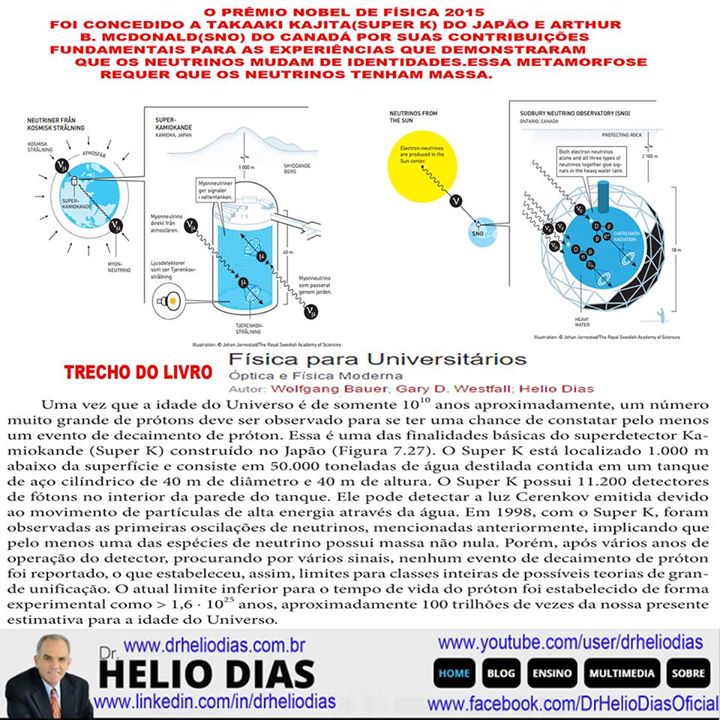É IMPORTANTE DESTACAR QUE ESSE TRABALHO SOMENTE FOI POSSÍVEL GRAÇAS AOS LABORATÓRIOS CRIADOS E MANTIDOS PELO JAPÃO(http://
What is a Neutrino?
All matter in the universe is composed of particles referred to as quarks and leptons. For example, a hydrogen atom is composed of one proton comprising three quarks and one electron, which belongs to the lepton particle family. Neutrinos are neutral leptons. It is very difficult to detect neutrinos, due to the fact that they rarely interact with other matter. Therefore the characteristics of neutrinos were not well measured for a long time.
Neutrino Oscillations
Neutrinos exhibit the properties of a particle as well as a wave. Therefore, neutrino1, neutrino2 and neutrino3, each with different mass eigenstates, travel through space as waves that have a different frequency. The flavor of a neutrino is determined as a superposition of the mass eigenstates. The type of the flavor oscillates, because the phase of the wave changes.
This phenomenon is called neutrino oscillation. Neutrino oscillation occurs when neutrinos have mass and non-zero mixing.
Neutrino oscillation was discovered by the Super-Kamiokande experiment in 1998.


